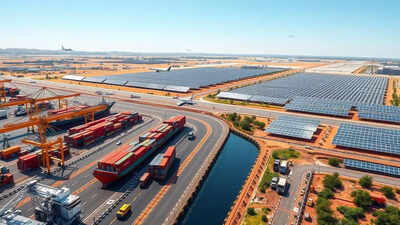US President Donald Trump has doubled down tariffs on steel and aluminum imports to 50%, following his earlier implementation of 25% tariffs less than three months ago.The move is intended to boost the US steel industry, but many businesses warn it will lead to higher prices for consumers.According to the New York Times, key sectors like housing, automotive, oil, and canned goods are expected to be hit hardest by Trump’s increased tariffs. Homebuilders, car makers, oil producers, and packaging companies are expected to face rising costs, which many may pass on to consumers.1. US steelmakers to create more jobs: Domestic steel industry representatives have welcomed the higher tariffs, saying they could boost investment and create more jobs in the US. Kevin Dempsey, president and chief executive at the American Iron and Steel Institute, stated that the increased tariffs would enhance US steel producers’ competitiveness against China and other nations flooding the global market.He noted that many in the industry felt the earlier 25% tariff on steel imports wasn’t enough to offer adequate protection.“The increase to 50% is well justified and will help prevent a new surge in imports of steel,” Dempsey said. He further continued that higher tariffs would eventually help create new jobs. “Over time, increased production will lead to increased employment,” Dempsey added.2. Foreign steel and aluminum producers: British steel and aluminum exporters will continue facing a 25% tariff when selling to the US, thanks to a temporary deal with the Trump administration. However, other countries like Canada are expected to face steeper challenges under the new tariff rules. As the primary foreign supplier of steel and aluminum to the United States, Canada’s response has been strong. The Canadian Steel Producers Association criticised the increase, stating it “essentially closes the US market to our domestic industry.”The European Steel Association has expressed concerns that this increase might redirect cheap foreign steel towards European markets.3. Impact on Aluminum industry: Aluminum industry groups back the US government’s move to boost the domestic sector, but they stress the need for continued aluminum imports from Canada. These imports are essential for making specialised products that support American jobs and investments.“We urge the administration to take a tailored approach that reserves high tariffs for bad actors — such as China that floods the market and includes carve outs for proven partners — such as Canada,” according to Matt Meenan, a spokesperson for the Aluminum Association.They also cautioned that higher tariffs alone won’t boost domestic production unless trade policies become “consistent, predictable trade and tariff policy to plan for current and future investment.”4. US Automakers at a disadvantage: Increased steel tariffs are expected to drive up the cost of cars and trucks. This spells trouble for both consumers, who are already dealing with high vehicle prices, and carmakers, who are already burdened by rising costs due to earlier tariffs on imported parts and engines.“These tariff increases will further raise the cost of both imported and domestic steel and aluminum, thereby increasing the cost of assembling a car in the United States,” said Matt Blunt, president of the American Automotive Policy Council, which lobbies on behalf of General Motors, Ford Motor and Stellantis.“This action places US industry and US workers at a disadvantage in the global marketplace,” he added. The precise impact of increased metal tariffs on vehicle prices remains uncertain. Analysts suggest price increases could range from several hundred dollars to over $1,000 per vehicle. The timing of these price effects is also uncertain.5. Homebuilders: The steel and aluminium tariffs are expected to increase construction costs and potentially limit new housing developments.Buddy Hughes, chair of the National Association of Home Builders, indicated that prior to the latest increase, builders had calculated tariffs would add $10,900 to new home costs.“President Trump’s move to double steel and aluminum tariffs will have a negative impact on housing affordability by further disrupting building material supply chains and fueling business uncertainty,” Hughes said in a statement.6. Can manufacturers: The increased metal tariffs will likely result in higher prices for canned goods at supermarkets.The Can Manufacturers Institute reports that domestic tin mill steel production has decreased by 75% over eight years due to significant production cuts.This reduction has led domestic can manufacturers and food producers to import approximately 80% of tin mill steel from international allies.7. Oil and Gas producers: The steel tariff increase will affect US oil companies’ operations, as steel is essential for pipeline construction and resource extraction. Steel comprises 10% to 20% of new well costs.Rising metal costs coinciding with falling oil prices create difficulties for producers. Smaller operations, which typically cannot order materials far in advance, are particularly affected.
Source:https://timesofindia.indiatimes.com/business/international-business/donald-trump-raises-steel-and-aluminum-tariffs-to-50-will-higher-levies-affect-us-industry-whats-next/articleshow/121635931.cms


